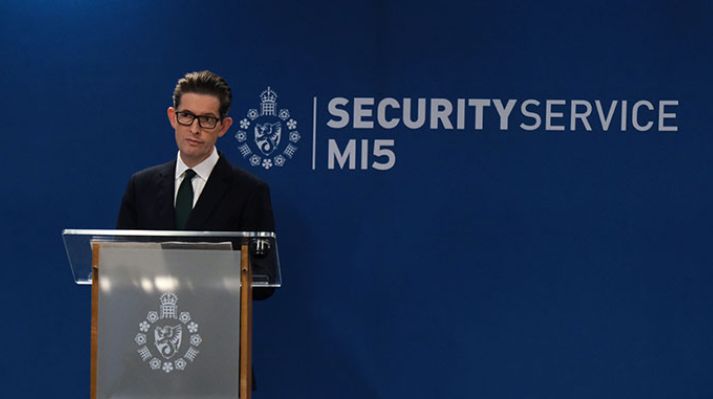Martyn’s Law is proposed UK legislation aimed at improving security at public venues and events. Named after Martyn Hett, a victim of the 2017 Manchester Arena attack, this law will require venues and event organisers to put in place measures to protect the public from terrorist attacks.
The Terrorism (Protection of Premises) Act 2025, also known as Martyn’s Law, received Royal Assent on 3 April 2025.
Since March 2017, security services and law enforcement have together disrupted 43 late-stage plots and there have been 15 domestic terror attacks. These terrorist attacks have sadly demonstrated that the public may be targeted at a broad range of locations.
The Manchester Arena Inquiry and London Bridge Inquests called for the introduction of legislation and guidance to protect the public. The Terrorism (Protection of Premises) Act 2025 forms part of the Government’s wider counter-terrorism strategy, CONTEST.
What does the Act do?
The Terrorism (Protection of Premises) Act 2025 commonly referred to as Martyn’s Law, is intended to improve protective security and organisational preparedness across the UK.
The new Act requires certain premises and events to ensure steps have been taken to prepare for potential terrorist attacks and get ready to help keep people safe in the event of an attack. In addition, certain larger premises and events will be required to consider and, where appropriate, take steps to reduce their vulnerability to acts of terrorism.
Ensure consistency of approach and clarity of responsibility
Whilst some premises and events proactively consider the risk posed by acts of terrorism, there is no consistency across the UK. Historically counter-terrorism protective security and preparedness have often fallen behind other legally required activities, such as Health and Safety.
The Act places public protection on a legal footing like other regimes, to address such inconsistency, whilst making it clear who is responsible at qualifying premises and events, and what they are required to do.
Striking the right balance
Those responsible for certain premises and events must take appropriate action to reduce the risk of harm to their workers and the public. To ensure a proportionate approach, it is expected that procedures and measures that are reasonably practicable are put in place.
The legislation establishes a tiered approach linked to the different uses of premises and the number of individuals it is reasonable to expect may be present at the same time at the particular premises or events. The requirements vary accordingly, acknowledging that larger venues and events may be impacted to a greater extent by an attack and should be expected to do more.
Subject to other conditions, to be qualifying premises, 200 or more individuals (including staff) must, from time to time, be reasonably expected to be present at the same time in connection with one or more uses specified in the Act.
Where 800 or more individuals (including staff) may be reasonably expected at the premises from time to time, they will be enhanced duty premises unless the Act provides otherwise. Qualifying premises that do not meet this threshold will be standard duty premises.
One of the conditions to be a qualifying event is that 800 or more individuals (including staff) may reasonably be expected to present at the same time at some point during the event. Events beneath this threshold are not in scope.
Two tier approach to Martyn's Law
Standard tier (100-799 capacity)
Those responsible for standard duty premises are required to have in place, so far as is reasonably practicable, appropriate public protection procedures.
These are procedures that may be expected to reduce the risk of physical harm to individuals if an act of terrorism occurred at the premises or in the immediate vicinity. They are procedures to be followed by people working at the premises where they suspect an act of terrorism is occurring, or is about to occur, at the premises or in the immediate vicinity.
The types of procedure are listed in the Act. The requirements for these smaller premises are focused on activities to enact policies and procedures that are expected to be simple and low cost. The aim of these requirements is to improve staff preparedness and responses. The Act does not require physical alterations to premises or the purchase of equipment for the purpose of having these procedures in place.
Enhanced tier (800+ capacity)
Those responsible for enhanced duty premises and qualifying events are required to have in place public protections procedures, too, but they must also do more in recognition of the potentially more impactful consequence of a successful attack.
They are required to have in place, so far as is reasonably practicable, appropriate public protection measures. These are measures that further the objectives of reducing the vulnerability of the premises or event to acts of terrorism or reducing the risk of physical harm to individuals, thereby providing better protection from acts of terrorism.
The types of measures are listed in the Act.
Oversight, advice and inspection
The role of The Security Industry Authority (SIA)
The Security Industry Authority (SIA) will provide the regulatory functions set out in the Terrorism (Protection of Premises) Act. This includes investigating suspected non-compliance and, where appropriate, taking enforcement action.
These functions will be delivered through a new function of the SIA. The Government was clear during passage of the Act that a core principle of the SIA would be to support, advise and guide those responsible for premises and events to meet the requirements of the legislation.
Where required they will also investigate and enforce compliance with the requirements, using a toolkit of powers and sanctions to address serious or persistent cases of non-compliance. This includes the power to issue penalties to those who fail to fulfil the requirements and to place restrictions on enhanced duty premises and qualifying events in the most serious cases.
What events are within scope?
Events that satisfy the following four criteria fall within scope of the bill:
1. The event must take place in a premises as defined in clause 3 of the Terrorism (Protection of Premises) Bill
For an event to be in scope of the bill, it must take place:
-
on open land (such as a field, park, or farmland)
-
on land occupied with a building (unless that building already falls within the enhanced tier)
-
within a building that is not already captured by the bill. A building not already captured may host occasional events where large numbers of the public gather. Under the bill, the term ‘building’ includes part of a building or a group of buildings.
A qualifying event cannot take place within premises that are already within the enhanced tier. Examples of enhanced tier premises include, but are not limited to, exhibition halls, public conference venues, and other venues for hire that may host 800 or more individuals at the same time.
For enhanced duty premises that host what could be considered a qualifying event, that event will be subject to requirements under the bill by virtue of it taking place at premises already in scope of the enhanced tier criteria. Therefore, the premises will already be required to have measures in place relevant to all the activities that take place there. Further information on which premises are in scope of the bill can be found in the scope (premises) factsheet.
2. Host at least 800 attendees at the same time
To be in scope, it should be reasonable to expect that 800 or more people will be present at the event at the same time at some point during the duration of the event. Further information on how this figure is to be calculated can be found in the reasonable expectation of numbers of individuals present factsheet.
3. Meet the ‘express permission’ criteria.
To meet the ‘express permission’ criteria, the qualifying event must have employees, or other individuals involved in the event (for example, volunteers), checking that members of the public wishing to attend satisfy a condition of entry. Specifically, this condition of entry is to check that members of the public have paid to attend the event, have an invitation granting access, or have a pass that grants access (which might include a free ticket). Whilst this provision applies to paid-for events, this provision will also encompass free events, if there is a check that attendees satisfy a condition of entry as specified above.
4. Be accessible to members of the public.
An event will only fall within scope of the bill if members of the public have access to all or part of it.
Examples of qualifying events
Example 1: A music event that takes place in a park or field. The event is open to the public and will have over 800 individuals attending. Attendees must purchase a ticket in advance of the event, and staff will be checking that attendees have a ticket before they enter the event.
Example 2: An event that takes place in a premises that is not usually open to the public, and the premises therefore do not fall within the bill’s scope. However, the event is open to the public and will have over 800 individuals attending. The event is free; however, attendees must register online to attend the event. Staff or volunteers will be checking that attendees have registered before they enter the event.
Example 3: An event that takes place at premises which falls within the standard tier, and the premises are not used as a place of worship, or for childcare, primary, secondary, or further education. The premises host an event on the weekend which is open to the public and will have over 800 individuals attending. Attendees must purchase a ticket in advance of the event, and staff will be checking that attendees have a ticket before they enter the event.
Exclusions
Transport premises that are already subject to existing legislative requirements to consider and mitigate threats are excluded (e.g. at airports, national rail and underground premises, international rail premises, and port facilities). This is because these existing requirements achieve comparable outcomes to those intended by the Terrorism (Protection of Premises) Bill. This means events taking place on these premises will not fall within scope of bill.
Premises occupied for the purposes of either House of Parliament; the Scottish Parliament or a part of the Scottish Administration; the Senedd Cymru or the Welsh Government; or the Northern Ireland Assembly or a Northern Ireland Department, are not in scope of the bill. This is because these premises already have existing security procedures and measures in place.
Events will not constitute a qualifying event if they occur at certain premises which are subject to specific provisions in Schedule 1 that require them to be treated as standard tier premises irrespective of the number of individuals that they host. The government’s rationale for applying a different criteria to these premises can be found in the scope (premises) factsheet.
Specifically, these premises include:
-
places of worship: all such premises that can be expected to host 200 or more individuals at the same time will fall within the standard tier (even if that number is 800 or greater). An event that occurs at these premises will not constitute a qualifying event and, as a result, will not fall within the enhanced duty.
-
premises used for childcare or primary, secondary, or further education: all such premises that can be expected to host 200 or more individuals at the same time will always fall within the standard tier, regardless of their maximum number. An event that occurs at these premises will not constitute a qualifying event and, as a result, will not fall within the enhanced duty.
The Act received Royal Assent on 3 April 2025 and it is expected that the implementation period will be at least 24 months.
Whilst those that fall within scope of the Act may wish to begin considering the requirements, they should note that there will be no legal requirement to comply until the legislation comes into force. The Home Office will publish statutory guidance during the 24 month implementation period. This guidance will assist those responsible to understand the requirements set out in the legislation. It is being designed to be easy to follow, needing neither particular expertise nor the use of third-party products or services.
Consider what you and your colleagues can do to make it harder for a would-be terrorist to carry out a successful attack by:
 Being alert to suspicious behaviour and activity in and around your site, such as people loitering or displaying an unusual level of interest in asking questions, filming or photographing.
Being alert to suspicious behaviour and activity in and around your site, such as people loitering or displaying an unusual level of interest in asking questions, filming or photographing.
Assessing the possible vulnerabilities of your site to various attack methods, and taking suitable measures to mitigate the risks.
Being security-minded in your communications, particularly online.
Encouraging and enabling a security culture in the workplace, eg. ensuring concerns can easily be reported and will be acted upon.
Considering how you and your staff would respond to an incident occurring inside, outside, or near to your building or site.
(Photo: CT operation during Formula E at Excel London July 2022)
For further info on the ACT programme, please visit the ACT website.
!!Buyer beware!!
- Dedicated guidance and support will be provided for duty holders to ensure that those in scope have the required information on what to do and how best to do it. The guidance will be easy to follow, needing no particular expertise.
- Neither the Home Office nor the National Counter Terrorism Security Office endorse any third-party products or providers. We continue to encourage referral to the ProtectUK platform for all guidance and updates on the Bill.
Action Counters Terrorism
Action Counters Terrorism (ACT) training provides a good introduction on how to respond to suspicious activity.
ProtectUK
The ProtectUK app sends real-time news and counter terrorism (CT) incident updates from UK Protect, contains the latest practical advice and guidance to help you protect your business, as well as information on how to respond in the event of an attack.
Centre for the Protection of National Infrastructure
The Centre for the Protection of National Infrastructure provides awareness training and guidance in assessing and mitigating the security risks
News and updates on the Terrorism (Protection of Premises) Bill.
The Security & Counter-terrorism working group aims to build a collaborative network for improved event security through common standards, knowledge sharing, coordinated threat response, training, crisis management, and policy advocacy.
Collaboration
Multi association security awareness group (MASA)
MASA aims to represent the entire events industry and to enable greater and wider outreach of government guidance, especially around counter-terror measures and intelligence.
MI5 Director General Ken McCallum gave his latest update on the current national security threats facing the UK.
08/10/24
Speaking from the Counter Terrorism Operations Centre (CTOC) in London, he explained that the threat from terrorism, alongside ongoing efforts by autocratic states to harm the UK’s security, presented the most complex threat environment we have ever seen.
Click on the photo below to read his full update:
https://www.gov.uk/government/news/landmark-anti-terror-legislation-gains-royal-assent
AEV Security working group members
Multi association security awareness (MASA) group members
When reporting/commenting on terrorism, please be mindful of the experiences of victims and their families.
Please include the following support information in reporting:
Support is available for anyone who has been affected by terror attacks.
Visit: victimsofterrorism.campaign.gov.uk or call Victim Support’s 24 hours free support line on 0808 168 9111.




